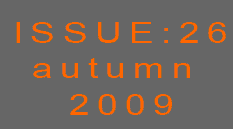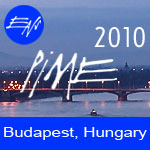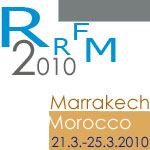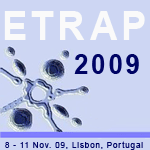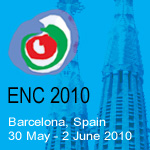

GLOBAL 2009/TOP FUEL: the largest nuclear conference ever to take place in Europe?
The following report on the jointly-organised GLOBAL 2009/TOP FUEL conference that took place in Paris from 6 – 10 September was compiled by Francis Sorin of SFEN and will be published in the next edition of Revue Générale Nucléaire. It summarises some of the main issues discussed, opinions exchanged and conclusions reached.
Paris recently played host to a nuclear conference that attracted 1,100 delegates from 34 countries, making it one of the most significant events of its kind ever to take place in Europe. This event, which took place in the Palais des Congrès, in Paris, provided a meeting place for nuclear professionals from across the world. It was the fusion of two separate events: the GLOBAL 2009 conference, entitled Sustainable Strategies and Future Prospects for the Nuclear Fuel Cycle Industry and the TOP FUEL 2009 conference, which focused on The Performance of Fuel used in Pressurised Water Reactors. Meanwhile, an exhibition held in parallel at the Palais des Congrès featured some of the world’s major industrial groups, companies and organisations active in the nuclear sector.
The joint event was organised by SFEN in cooperation with the IAEA and OECD/NEA and with the support of ENS and its members, the American Nuclear Society (ANS), the Atomic Energy Society of Japan and the Korean Nuclear Society. It is worth noting that on the agenda of GLOBAL 2009 was a session organised jointly with GIF (the Generation IV International Forum) that focused on the latest situation with regards to nuclear research and on the industrial prospects for Generation IV reactors.
In addition to this report the Revue Générale Nucléaire will also publish a more in-depth analysis of what was discussed during both jointly-organised conferences in its November/December edition (N°6/2009).
Here is an initial analysis of the issues discussed and of the exchange of views that took place in Paris. There was a significant degree of consensus in the conclusions reached and here is a summary of the main ones:
-
the fact that the event attracted 1,100 delegates is in itself highly significant as it sets, to our knowledge, a record over the last twenty years for attendance at a nuclear conference in Europe. In addition to the interest that was shown in the conference and the work of the organisers, the main reason for this record stems from the recent global increase in interest in nuclear energy. Its success reflects the nuclear “renaissance” (as the Anglo-Saxon media call it) and the new spirit of dynamism that underpins all sectors of nuclear activity
-
from an industrial perspective it now seems virtually certain that the operational lifetime for a nuclear unit can easily exceed forty years and even be extended to sixty years. This view is particularly strongly held in the USA, where almost half of existing nuclear units have been granted an extension of their operational lifetime to sixty years. Some people in the USA have even spoke about eighty years, or more. This would, of course, require the replacement and refurbishment of the main equipment.
When projected to the world’s total nuclear park, this extension of the operational lifetime of reactors will have a considerable effect upon total installed capacity. Indeed, new build programmes would no longer be seen as replacing decommissioned reactors but rather as increasing current capacity.
It is the safety authorities, however, who will have the last word as they alone are qualified to extend the operational lifetime of nuclear reactors. As far as France is concerned, the ASN is examining case by case the situation at every nuclear unit before it decides whether or not to grant an extension.
-
One conclusion that emerged from the debates during GLOBAL2009/TOP FUEL and during the joint session with GIF is that the recycling of fissile matter present in spent fuel could become the option of choice for completing the fuel cycle. The concept of a closed cycle with the treatment of spent fuel, the recovery of uranium and plutonium and the manufacture and use of MOX type fuel appears to be the best strategy for two obvious reasons: due to the economising of uranium resources and on account of the reduction in the final quantity of radioactive waste that is produced
-
A new debate on the question of non-proliferation has begun. It has led to the potential creation of a multinational organisation responsible for overseeing all sensitive operations related to the fuel cycle. The goal here is to prevent countries from building, alongside their electricity generating plants, installations like uranium enrichment plants and recycling plants that could encourage proliferation. What is called for is the creation of multinational centres, under international supervision, that will guarantee a whole range of so-called “sensitive operations” (i.e. enrichment, recycling, waste packaging) are carried out in all countries that have nuclear power plants. This multinational approach to overseeing sensitive nuclear operations seems to be the most effective means of preventing uncontrolled proliferation.
-
Contrary to popular opinion over the past four or five years, lots of young people are prepared to pursue a career in the nuclear sector. Recruitment campaigns underway in several countries have found no evidence of reticence among young professionals to opt for a job in the nuclear sector. Quite the contrary. In fact, this is what Anne Lauvergeon stressed during the inaugural session of the conference when she stated that AREVA was having no trouble recruiting thousands of employees each year, including graduates from renowned seats of learning and training centres. On a worldwide scale it appears that recruitment is progressing without difficulty. Bearing this in mind, however, it is important to manage effectively the transfer of knowledge. Occasionally, more senior professionals are called upon to help ensure that this successful transition takes place and to launch and complete specific projects. This calling upon the collaboration of more experienced professionals also highlights the reality of the nuclear revival….
-
The exchange of views that took place during the conference with delegates to the GIF symposium put the spotlight on R&D programmes that focus on the reactors of tomorrow and their potential commercialisation. These research programmes are being carried out in optimal circumstances and every indication points to the fact that some of these new reactors could be deployed as of 2030/2040. Several speakers underlined their desire to see these new reactors, which boast “revolutionary” performance levels with regards to safety, environmental-friendliness and operational flexibility, perform equally well financially, particularly when it comes to investment cost and the cost per kilowatt hour. The question of reasonable cost must be of primary concern to the designers of the reactors, otherwise the reactors risk being brilliant of concept but ultimately unusable due to their prohibitive cost.
For more information on the GLOBAL2009/TOP FUEL conference contact Francis Sorin of SFEN, keep your eyes open for the next edition of Revue Generale Nucléaire or visit the conference website.
|

